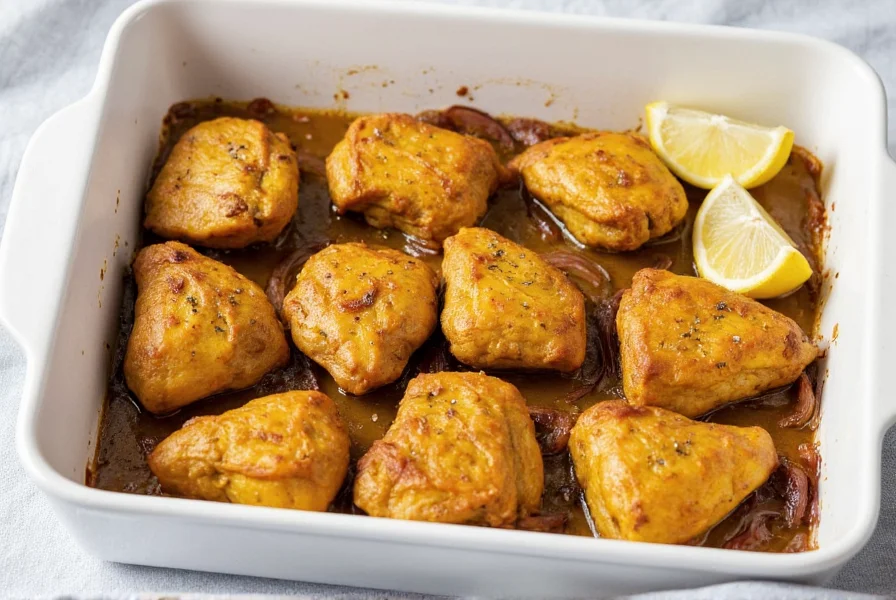Golden-hued turmeric has been elevating chicken dishes for centuries across Indian, Middle Eastern, and Southeast Asian cuisines. This versatile spice doesn't just add visual appeal—it creates complex flavor profiles while offering culinary advantages that make it indispensable in modern kitchens. Understanding how to properly incorporate turmeric into chicken recipes separates satisfactory meals from extraordinary ones.
Why Turmeric Works Wonders with Chicken
Turmeric's active compound, curcumin, binds beautifully with poultry proteins, creating depth without overpowering chicken's delicate flavor. Unlike many spices that merely sit on the surface, turmeric penetrates chicken tissue during marination, resulting in evenly seasoned meat from edge to center. Professional chefs appreciate how turmeric's slightly bitter, earthy notes balance chicken's natural sweetness, while its anti-inflammatory properties have made it increasingly popular in health-conscious cooking.
| Spice Pairing | Flavor Contribution | Recommended Ratio |
|---|---|---|
| Black Pepper | Enhances curcumin absorption | 1/4 tsp per tsp turmeric |
| Cumin | Adds earthy warmth | Equal parts to turmeric |
| Ginger | Provides bright contrast | 1:1 with turmeric |
| Coriander | Creates citrusy balance | 1.5x turmeric amount |
Essential Techniques for Perfect Turmeric Chicken
Master these professional methods to avoid common pitfalls when preparing chicken recipes using turmeric:
Marinating Matters Most
For maximum flavor penetration, combine turmeric with acidic ingredients like lemon juice or yogurt. The acid helps break down chicken proteins, allowing the spice to permeate deeper. Always include a fat source—olive oil, coconut milk, or ghee—as curcumin is fat-soluble. Marinate boneless cuts for 2-4 hours; bone-in pieces benefit from 6-12 hours. Never exceed 24 hours as turmeric's enzymes can begin to break down the meat's texture.
Avoiding the Stain Challenge
Turmeric's vibrant color can leave stubborn stains on cutting boards and cookware. Prevent this by:
- Using glass or stainless steel bowls for marinating
- Adding turmeric to oil first before incorporating other ingredients
- Immediately washing utensils with hot soapy water after use
- Applying lemon juice to stains before washing
5 Exceptional Chicken Recipes Using Turmeric
1. One-Pan Turmeric Lemon Chicken
This simple weeknight solution delivers restaurant-quality results with minimal cleanup. Sear bone-in chicken thighs in olive oil with 1.5 tsp turmeric, 1 tsp garlic powder, and salt. After browning, add sliced onions, lemon wedges, and chicken broth. Roast at 375°F for 35 minutes until golden and cooked through. The lemon balances turmeric's earthiness while the broth creates a naturally golden sauce.

2. Authentic Turmeric Chicken Curry
For traditional flavor, sauté 2 tbsp grated ginger and 4 minced garlic cloves in coconut oil. Add 2 tbsp tomato paste, 2 tbsp ground turmeric, 1 tbsp garam masala, and 1 tsp cayenne. Cook until fragrant, then add 1.5 lbs chicken pieces and sear. Pour in 1 can coconut milk and simmer 25 minutes. Finish with fresh cilantro. This authentic turmeric chicken curry recipe creates a rich, complex sauce where turmeric shines without dominating.
3. Turmeric Roasted Chicken Sheet Pan Dinner
Combine chicken drumsticks with baby potatoes, carrots, and red onions tossed in a mixture of 2 tsp turmeric, 3 tbsp olive oil, 1 tbsp honey, and 2 tsp smoked paprika. Roast at 425°F for 40 minutes, stirring once. The honey caramelizes the turmeric, creating a beautiful crust while the potatoes absorb the golden spices. This healthy turmeric chicken recipe serves four with complete meal in one pan.
Common Mistakes to Avoid
Even experienced cooks make these errors with turmeric chicken recipes:
- Adding turmeric too late—Always incorporate early in cooking to allow flavors to develop
- Using expired turmeric—Freshness dramatically impacts flavor (replace every 6 months)
- Skipping the fat component—Curcumin requires fat for proper flavor release
- Over-marinating—Can make chicken mushy (max 24 hours)
- Not balancing acidity—Lemon or vinegar prevents turmeric from tasting flat
Storage and Reheating Guidelines
Properly stored turmeric chicken maintains quality for 3-4 days in airtight containers. When reheating, add a splash of liquid to prevent drying. Microwave in 30-second intervals at 50% power, stirring between intervals. For best results, reheat in a covered skillet over medium-low heat with a tablespoon of broth or coconut milk. Never freeze turmeric chicken in metal containers as the spice can react with the metal.
Seasonal Variations
Adapt your turmeric chicken recipes throughout the year:
- Spring: Add fresh peas and asparagus to curries
- Summer: Incorporate mango chutney for grilled versions
- Fall: Pair with roasted squash and warm spices
- Winter: Add root vegetables and hearty greens
Frequently Asked Questions
Does turmeric make chicken taste bitter?
When used properly, turmeric adds earthy warmth without bitterness. The key is balancing it with complementary flavors—always pair with black pepper (which also enhances curcumin absorption) and a touch of acid like lemon juice. Using fresh, high-quality turmeric and toasting it briefly in oil before adding to chicken prevents any bitter notes.
How much turmeric should I use per pound of chicken?
For most chicken recipes using turmeric, 1-2 teaspoons of ground turmeric per pound of chicken provides optimal flavor without overwhelming. When using fresh turmeric root, triple this amount as it's less concentrated. Always start with less—you can add more during cooking but cannot remove excess. Remember that turmeric's color intensifies as it cooks, so the visual impact will be greater than the flavor intensity.
Can I substitute fresh turmeric for ground in chicken recipes?
Yes, fresh turmeric works beautifully in chicken dishes and offers a brighter, more complex flavor. Use a 3:1 ratio (3 parts fresh to 1 part ground). Peel and finely grate fresh turmeric root, then sauté in oil for 1-2 minutes before adding chicken. Fresh turmeric stains more intensely, so handle with care and clean surfaces immediately. It's particularly excellent in marinades and quick-cooking recipes where its delicate flavor won't dissipate.
Why does my turmeric chicken turn gray when reheated?
This color change occurs when turmeric reacts with oxygen during storage. To maintain the vibrant golden color, store turmeric chicken with a thin layer of oil or sauce covering the surface to create an oxygen barrier. When reheating, add a small amount of fresh turmeric (1/8 tsp) to restore color. Using glass or ceramic containers instead of metal also helps preserve the golden hue during storage.
What are the best side dishes for turmeric chicken recipes?
Turmeric chicken pairs beautifully with cooling elements that balance its earthy warmth. Basmati rice with cucumber raita provides perfect contrast, while roasted cauliflower or sweet potatoes complement the spice profile. For lighter options, try cucumber salad with mint or simple steamed greens. Avoid strongly flavored sides that might compete with turmeric's distinctive taste—let the golden spice remain the star of your meal.











 浙公网安备
33010002000092号
浙公网安备
33010002000092号 浙B2-20120091-4
浙B2-20120091-4